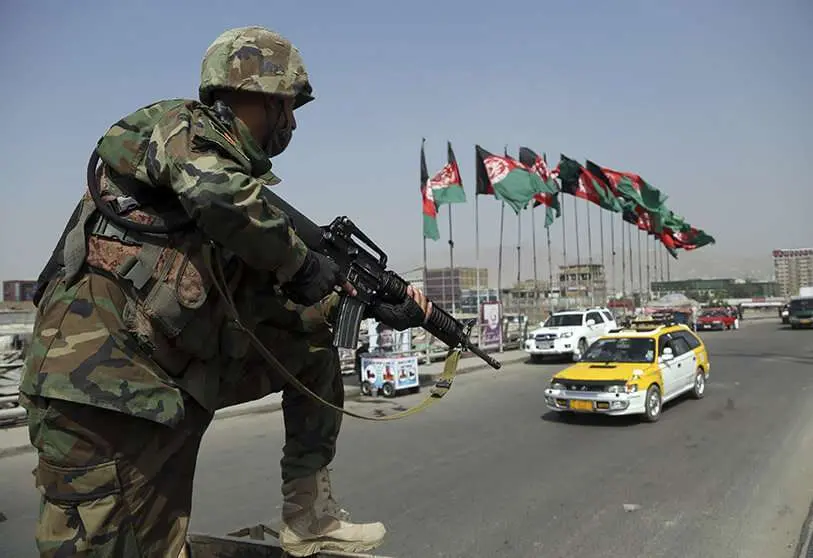Five keys to the US withdrawal from Afghanistan after 20 years of war

The departure of US and international coalition forces from Afghanistan leaves Afghan forces in control of 100 percent of operations against the Taliban and other armed groups, marking the end of an era and the beginning of an uncertain future.
Afghanistan, which was invaded by US troops in 2001 to hunt down al-Qaeda leader Osama bin Laden, and which has remained in the country until now to fight the Taliban, is experiencing the departure of international forces at a time of extreme violence.
These are the key factors that mark the end of the US presence in Afghanistan after almost 20 years of war:

On 1 May, US forces began the process of withdrawing from Afghanistan after twenty years of fighting what is so far the longest war in US history.
The process, which is expected to be completed by the end of August, will precede the commemoration of the twentieth anniversary of the 9/11 attacks that led to the invasion of Afghan territory.
The decision to leave Afghanistan was agreed in the historic agreement between the Taliban and the US, which was signed on 29 February 2019 in Doha, with the aim of finding a way to end the war in the Asian country.
Afghanistan reached more than 100,000 foreign troops in 2012 to fight the Taliban and other terrorist groups. Although the insurgents managed to grow stronger by the day in many territories, the support of international troops helped the government in Kabul to maintain control over much of the country.
US forces' air power was in some cases essential in pushing back insurgent offensives.

Afghan forces are not at their best in the face of Taliban attacks. Corruption, weak leadership, inefficient evacuation of dead or wounded soldiers, and delayed payments and supplies of food and ammunition have undermined soldiers' morale, government sources told Efe on condition of anonymity.
This has also caused Afghan security forces to lose large parts of the country to the Taliban.
The Taliban have taken advantage of the withdrawal of international troops to increase their attacks. In the last two months they have seized power in nearly 100 of the country's 400 districts.
Today, the insurgents control more than 35% of the districts and have managed to reach the gates of 13 of the country's 34 provincial capitals.
According to the Taliban, some 1,500 Afghan soldiers surrendered and hundreds surrendered checkpoints without resistance.
The Taliban's rapid advance has raised serious concerns among Afghans about their intention to end the war peacefully and the eventual restoration of Taliban rule.

Although the Kabul government still relies on international military and financial support to keep up the fight against the Taliban, tens of thousands of civilians and former jihadi fighters have shown their readiness to fight the insurgents.
Thus, the Kabul authorities began distributing weapons to their supporters in various parts of the country to support the depleted Afghan forces.
Most of the armed civilians are gathered in territories under the command of former jihadi leaders or "warlords", as the leaders who fought against the invasion of Soviet forces in 1980 are known.

Afghanistan and the Taliban began an intra-Afghan negotiation process in September last year, which was put on hold by the parties' continued demands for progress, especially from the insurgents.
Despite the enormous expectations of the peace process, there has been no tangible progress in the last six months of talks and, instead of reducing violence, the Taliban have significantly increased their attacks across the country.
The Taliban's advance on the territories has increased the insurgents' confidence and their interest in military victory as opposed to a negotiated settlement.
In an article published by the Taliban's press office, the group claimed that the capture of more and more territory is intended to bring real peace.
Despite "no sign of peace" from the Taliban, the Afghan government still hopes that the Taliban will return to the peace table at some point so that the ongoing war can be ended through negotiations.
The Taliban's continuation of their attempt to gain ground through armed means by abandoning negotiations puts Afghanistan at the forefront of another war fought even by civilians.








